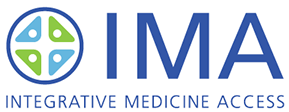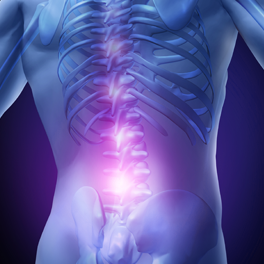
INTEGRATIVE MEDICINE ACCESS: A HEALTHCARE SOLUTION
Low-income individuals face two significant healthcare obstacles: (1) traditional western medical practice is a narrow, acute illness-focused paradigm and, as such, limits their opportunities for optimal health and wellness; and (2) Integrative Medicine has been largely inaccessible—its proven benefits have been neither affordable nor widely understood—in low-income communities (6).
Integrative Medicine is patient-centered care that focuses on disease prevention and holistic health. It utilizes western and non-western, science-based treatments, such as acupuncture, chiropractic, meditation, physical therapy, and yoga therapy, among others.
Integrative Medicine has been scientifically proven to benefit individuals with asthma,(1) chronic pain,(2) cancer,(3) stress,(4) and numerous other conditions.(5) The National Institutes of Health (NIH) recognized the demonstrated impact of Integrative Medicine on wellbeing by establishing the National Center for Complementary and Integrative Health (NCCIH) in December of 2014.
Mission
Integrative Medicine Access (IMA) is a non-profit organization that facilitates access to Integrative Medicine among low-income and medically underserved people.
Overview
IMA is an online resource that provides education about Integrative Medicine and connects low-income clients with practitioners who offer low-cost services. Founded by Dr. Myles Spar in June of 2013, IMA is based in Manhattan Beach, California, and serves practitioners and clients throughout the United States.
Goals
• Education: Serve as a diverse resource of information about Integrative Medicine treatments and how they can be applied to achieve optimal health and wellbeing.
• Accessibility: Enable people to locate affordable, culturally sensitive, geographically convenient services.
• Connection: Connect Integrative Medicine practitioners with underserved clients.
• Coordination: Foster coordination among practitioners to provide clients with a truly integrated multi-disciplinary approach to care.
• Leadership: Act as a model of low-cost, patient- centered care that focuses on wellness, prevention, and chronic disease management for diverse populations.
• Training: Provide a locus of education for medical students, practitioners, and policy-makers on the benefits of Integrative Medicine to the quality of healthcare in the United States.
• Evaluation: Collect and analyze data on utilization and outcomes to demonstrate the impact of Integrative Medicine on diverse populations.
Strategies
• Practitioner and client outreach and education (presentations, community events, conferences)
• Internet database of credentialed, low-cost practitioners (searchable by language, zip code, treatment, condition)
• Practitioner and client website portals (profiles, treatment teams, private messaging)
• Digital communications (website, blog, social media, newsletter, webinars)
• Electronic Medical Record and other innovative healthcare applications
• Evaluation of outcomes
Practitioner & Client Membership Requirements
• Practitioners must fill out an application online or by mail, provide evidence of up-to-date certification, education and licensing, and commit 10% of their time to IMA clients.
• Clients must fill out an application online or by mail and provide proof of income at or below 200% of the poverty line.
Practitioner & Client Membership Benefits
• Practitioners join a pre-eminent listing of qualified and high-quality care searchable by members and nonmembers.
• Clients gain access to reliable, high-quality care for $10 per visit.
Partner & Supporting Organizations
• Integrative Medicine for the Underserved
• Academy of Integrative Health and Medicine
• National Center for Integrative Primary Healthcare
Contact
Myles Spar, MD, MPH Founder/Executive Director
drspar@gmail.com
P: 844-DIAL-IMA, F: 323-425-8120,
www.integrativemedicineaccess.org
References:
1. Kligler, B., et al. (2011). Randomized trial of the effect of an integrative medicine approach to the management of asthma in adults on disease-related quality of life and pulmonary function. Alternative Therapies in Health and Medicine, 17(1), 10-15. 2. Cramer, H., et al. (2013). A Systemic Review and Meta-analysis of Yoga for Low Back Pain. The Clinical Journal of Pain, 29(5), 450-460.
3. Ezzo, J. M., Richardson, et al. (2006). Acupuncture-point stimulation for chemotherapy-induced nausea or vomiting. The Cochrane Database of Systematic Reviews, (2), CD002285.
4. Gardiner, P., et al. (2014). Medical group visits: a feasibility study to manage patients with chronic pain in an underserved urban clinic. Global Advances in Health and Medicine: Improving Healthcare Outcomes Worldwide, 3(4), 20-26.
5. Luberto, C., et al. (2013). Integrative Medicine for Treating Depression: An Update on the Latest Evidence. Current Psychiatry Reports, 15(9), 1-9.
6. Chao, M. T., & Wade, C. M. (2008). Socioeconomic Factors and Women’s Use of Complementary and Alternative Medicine in Four Racial/Ethnic Groups. Ethnicity & Disease, 18(1), 65–71.

















